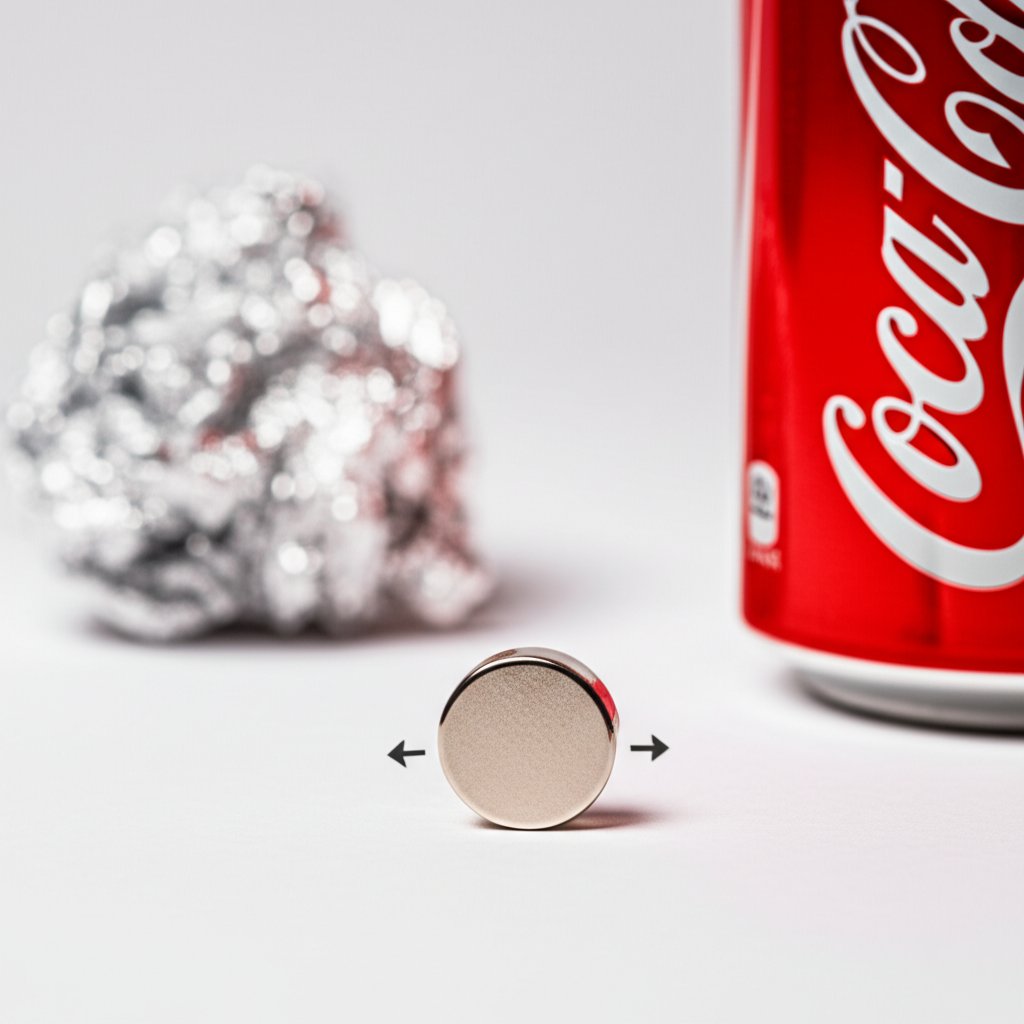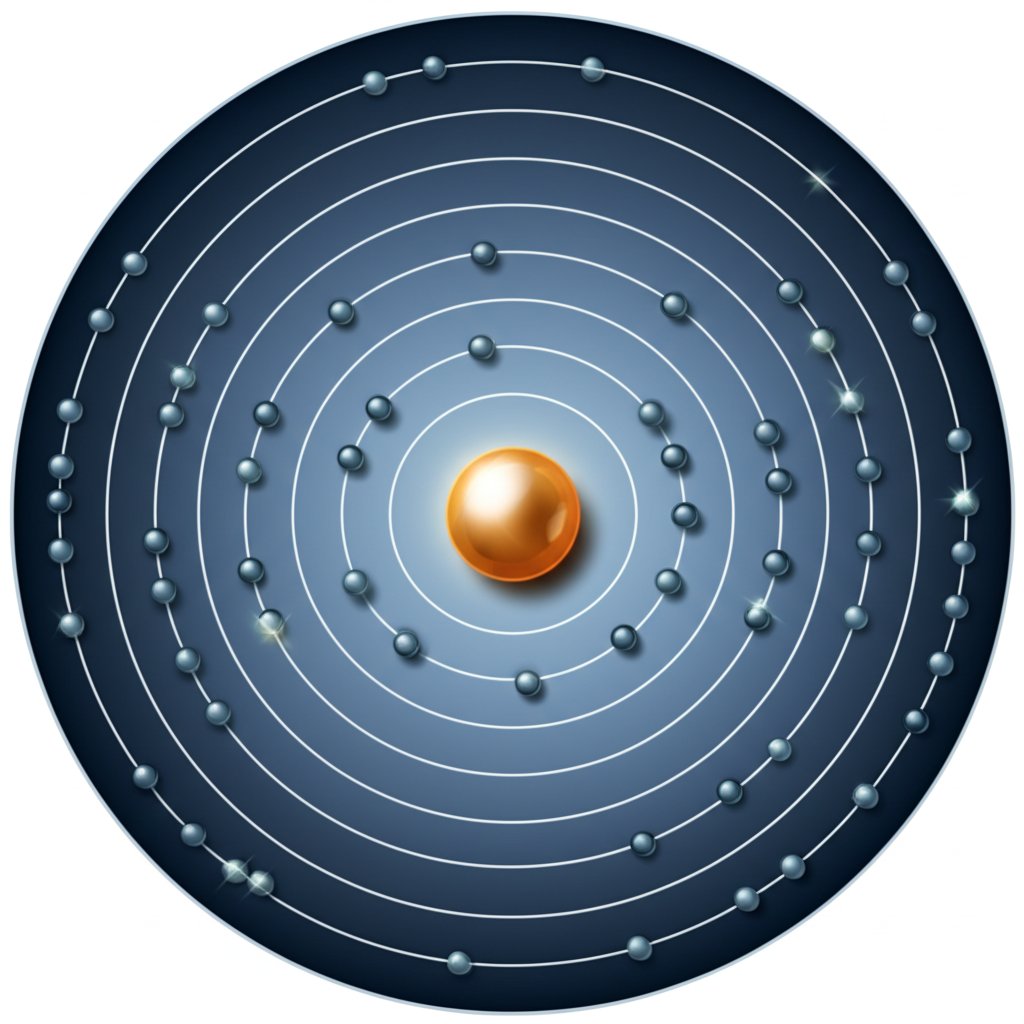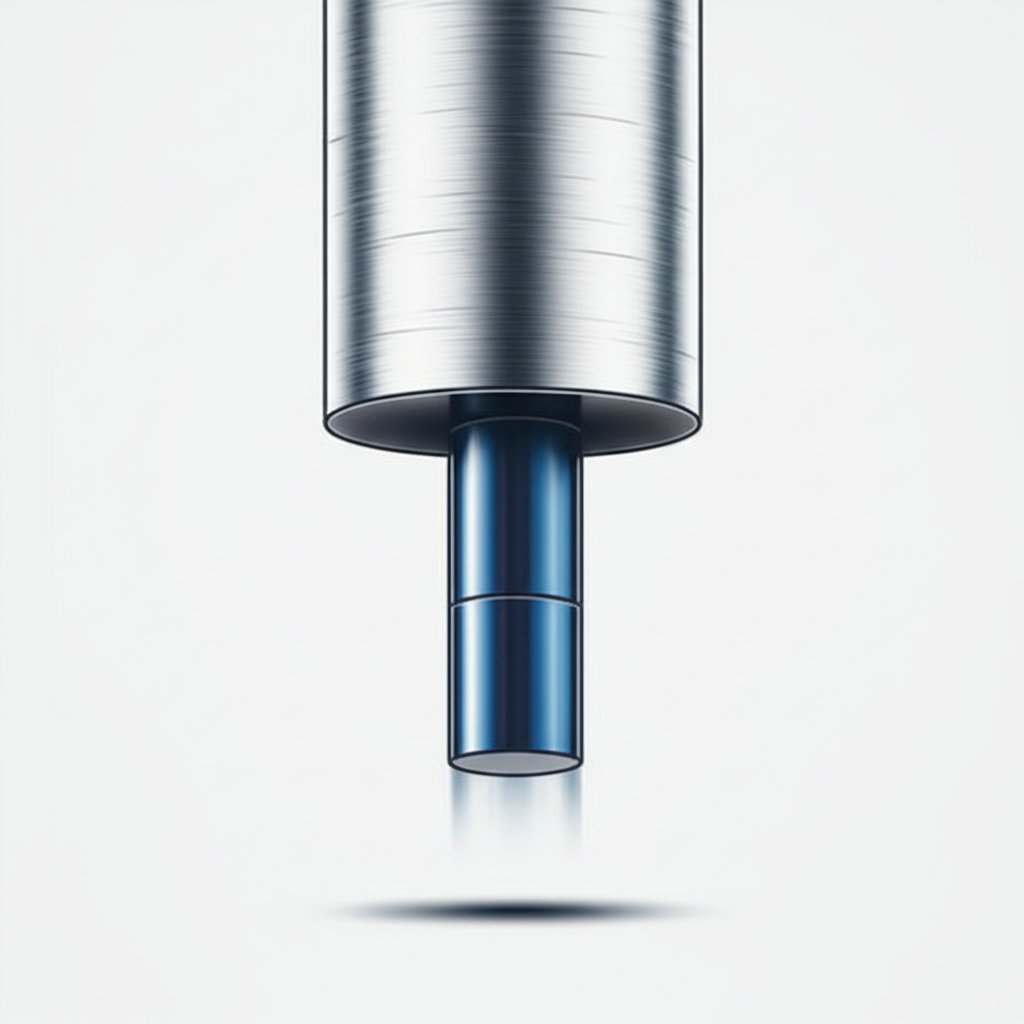
Have you ever wondered, “Is aluminum magnetic?” You’re not alone. This question pops up frequently, and for good reason—aluminum is everywhere. From the foil in your kitchen drawer to the body of your smartphone, this metal is woven into the fabric of everyday life. Yet, when it comes to understanding which metals stick to magnets and which don’t, things can get confusing.
Imagine sorting through a drawer of utensils and noticing that some cling to a fridge magnet while others don’t. Or maybe you’ve tried to stick a magnet to a soda can, only to find it slides right off. These everyday experiences naturally lead to curiosity about aluminum’s magnetic properties. Is it just like iron or nickel, or does it behave differently?
Part of the confusion stems from the fact that not all metals are created equal in the world of magnetism. While metals like iron are famously magnetic, others—such as aluminum, copper, and gold—do not react the same way. This distinction is important not only for satisfying curiosity but also for practical reasons in fields ranging from construction to electronics and transportation. For example, aluminum’s unique combination of lightness, corrosion resistance, and minimal magnetic interaction makes it an indispensable material in everything from airplanes to food packaging.
The purpose of this article is to provide a clear, science-backed explanation to the question, “Is aluminum magnetic?” We’ll break down the science, clarify common myths, and help you understand how aluminum’s magnetic properties shape its role in modern technology and daily life. Whether you’re a student, a hobbyist, or just curious, you’ll find straightforward answers and practical insights in the sections ahead.
So, is aluminum magnetic? If you’ve ever pressed a magnet to a soda can or sheet of aluminum foil, you’ve likely noticed—nothing happens. That’s because aluminum is not magnetic in the way metals like iron or nickel are. To clear things up, let’s break down what this really means.
In simple terms: aluminum is a paramagnetic metal. It’s not ferromagnetic, so it won’t stick to magnets or behave like traditional magnetic metals. While it can interact with very strong magnetic fields, the effect is minimal and temporary.
If you’re just looking for a quick answer—aluminum is not magnetic in the way most people think. But there’s more to the story, especially when you dive into the science behind why this is the case. Let’s explore what’s happening at the atomic level next.

Ever wondered why is aluminum not magnetic even though it’s a metal, just like iron or nickel? The answer lies deep within its atomic structure and the behavior of its electrons. Let’s break down the science in a way that’s easy to grasp, even if you haven’t thought about atoms since high school.
At the heart of every material’s magnetic properties is its atomic structure. Imagine an atom as a tiny solar system, with electrons spinning around a nucleus. The way these electrons are arranged—and how they spin—determines whether a material will be magnetic or not.
Let’s take a closer look at the aluminum electron configuration. Aluminum’s atomic number is 13, which means it has 13 electrons arranged as follows: 1s2 2s2 2p6 3s2 3p1. This configuration leaves it with three electrons in its outer shell, but only one of them is unpaired. While this might sound like a recipe for magnetism, there’s a crucial catch:
So, the next time you wonder why your aluminum foil or soda can doesn’t stick to a magnet, remember it all comes down to the unique way aluminum’s electrons are arranged and behave. Up next, we’ll dig deeper into what “paramagnetism” means for aluminum and how it compares to other types of magnetism.
Let’s dig a little deeper—if aluminum isn’t magnetic like iron, what does it mean when experts call it paramagnetic? Sounds complex? Don’t worry. Imagine you’re holding a magnet near a piece of aluminum foil. You won’t see the foil leap toward the magnet, but on an atomic level, something subtle is happening. Here’s how paramagnetism in aluminum works and why it matters.
Paramagnetism is a type of magnetism found in certain materials, including aluminum. In simple terms, paramagnetic materials are weakly attracted by a strong external magnetic field, but this attraction is so faint you’ll never notice it in everyday situations. The key to paramagnetism lies in the atoms themselves:
So, when you read about aluminum magnetic susceptibility, it refers to this weak, temporary response to a magnetic field. Susceptibility is a measure of how easily a material becomes magnetized in an external field. For aluminum, this value is positive but very small, reflecting its barely-there magnetic behavior.
To make sense of the different ways materials respond to magnets, let’s compare the three main types of magnetism: ferromagnetism, paramagnetism, and diamagnetism. The table below shows where aluminum fits in:
| Property | Ferromagnetism | Paramagnetism (Aluminum) | Diamagnetism |
|---|---|---|---|
| Common Examples | Iron, Nickel, Cobalt | Aluminum, Platinum | Copper, Bismuth, Carbon |
| Response to Magnetic Field | Strong attraction; can become permanently magnetized | Weak, temporary attraction; no permanent magnetism | Weak repulsion; no permanent magnetism |
| Magnetic Susceptibility | Large positive value | Small positive value | Small negative value |
| Effect When Magnet Removed | Often remains magnetized | No lasting effect; magnetism disappears | No lasting effect; magnetism disappears |
As you can see, aluminum’s behavior is very different from that of ferromagnetic metals like iron, which can become permanent magnets. It’s also distinct from diamagnetic materials, which are weakly repelled by magnetic fields.
Think about the devices and structures around you—smartphones, airplanes, MRI machines. In all these, even a faint magnetic response can be crucial. Aluminum’s paramagnetic nature means:
In summary, while aluminum does have a scientific connection to magnetism, its paramagnetism is so faint that it’s functionally non-magnetic in most settings. Up next, we’ll tackle some persistent myths and clarify what’s really going on when people think aluminum is magnetic.
Have you ever heard someone say, “Aluminum is a magnetic metal,” or watched a friend try to stick a magnet to an aluminum can? You’re not alone—these myths are everywhere! Let’s clear up the confusion and set the record straight with science-backed facts. By understanding what’s true and what’s not, you’ll be able to confidently answer the question: is aluminum magnetic true or false?
It’s easy to confuse aluminum with other metals, especially since some items (like cans or kitchenware) might look similar to steel. Here’s how you can tell them apart:
So, the next time you hear someone claim that aluminum is a magnetic metal, you’ll know the truth: aluminum’s weak paramagnetic response is so faint, it’s functionally non-magnetic in daily life. This distinction is crucial for engineers, designers, and anyone working with metals in technology or construction.
Now that we’ve cleared up the myths, let’s see how these facts play out in your own home—are items like aluminum foil or soda cans magnetic? Find out in the next section.

Ever tried sticking a magnet to your kitchen’s aluminum foil or a soda can and wondered, “Is aluminum foil magnetic?” or “Is an aluminum can magnetic?” You’re not alone—these are some of the most common questions about household metals. Let’s break down what really happens when you bring a magnet close to these everyday items.
These results might seem surprising, especially since both items are metallic and shiny. But the science is clear: under normal conditions, neither aluminum foil nor cans show any noticeable magnetic behavior. This is because the weak paramagnetism of aluminum is only detectable with very strong magnetic fields—far stronger than what you’ll find in a household magnet.
So, why are these products so non-magnetic? The answer lies in their purity. Everyday aluminum foil and cans are manufactured with a focus on high-purity aluminum—often above 99.5%—to ensure they’re lightweight, corrosion-resistant, and safe for food contact. This high purity guarantees their non-magnetic properties, making them reliable for both household and industrial use.
For industries that require even stricter specifications—like aerospace, rail transit, or electronics—companies such as Shengxin Aluminum provide high-quality, specification-driven aluminum profiles. Their expertise ensures that the aluminum used in advanced applications remains reliably non-magnetic, lightweight, and durable.
In short, when you reach for aluminum foil or open a soda can, you can be confident they won’t interact with your fridge magnets. But what happens when aluminum is mixed with other metals or used in different forms? Let’s explore how alloys and composite products might change the story.
So far, we’ve learned that pure aluminum is only paramagnetic, showing almost no attraction to everyday magnets. But what happens when aluminum is used in alloys or composite products? If you’ve ever wondered, is aluminum alloy magnetic or is cast aluminum magnetic, you’re not alone. The answer depends on what’s mixed in—and how these mixes are used in real-world applications.
Aluminum alloys are created by combining aluminum with other elements such as copper, magnesium, silicon, zinc, or even trace amounts of iron. These blends are designed to improve strength, durability, and workability for everything from airplane wings to automotive parts. But do these additions make aluminum alloys magnetic?
Cast aluminum refers to aluminum alloys that have been melted and poured into molds to form complex shapes, commonly used in automotive and machinery parts. Curious if is cast aluminum magnetic is ever true? Here’s what you need to know:
In critical industries—like aerospace, rail transit, electronics, and medical devices—choosing the right material isn’t just about weight or corrosion resistance. Even trace magnetic properties can disrupt sensitive equipment or affect safety. That’s why understanding and controlling what goes into an aluminum alloy is so important.
| Product Type | Magnetic Behavior | Typical Applications |
|---|---|---|
| Pure Aluminum | Paramagnetic (functionally non-magnetic) | Electronics, packaging, aerospace |
| Standard Aluminum Alloys | Non-magnetic (unless contaminated) | Auto parts, construction, machinery |
| Cast Aluminum | Non-magnetic (possible weak response if iron present) | Engine blocks, housings, tools |
| Composite/Assembled Products | Depends on non-aluminum parts (e.g., steel inserts) | Consumer goods, industrial equipment |
For engineers and manufacturers, verifying the magnetic properties of materials is more than a curiosity—it’s a necessity. In high-tech sectors, even a hint of magnetism can interfere with sensors, navigation systems, or medical imaging equipment. That’s why material purity and traceability are non-negotiable.
When your project demands guaranteed non-magnetic properties—whether for sensitive electronics, rail transit, or advanced manufacturing—partnering with an expert supplier is crucial. Companies like Shengxin Aluminum specialize in producing high-purity, specification-driven aluminum profiles. Their advanced production lines, strict quality controls, and deep industry expertise ensure that your aluminum products meet the exacting standards required for today’s most demanding applications.
In summary, while the vast majority of aluminum alloys and cast aluminum products are functionally non-magnetic, always check the specific material composition for your application. Up next, we’ll show you how to test for magnetism at home, so you can distinguish between aluminum and magnetic metals with confidence.
Ever wondered how to check if aluminum is magnetic or if that mystery metal in your toolbox is really aluminum? You don’t need fancy lab equipment—just a common magnet and a few simple steps. Here’s how you can test aluminum for magnetism at home or in your workshop, and what your results really mean.
This simple magnet test is a quick and reliable way to distinguish aluminum from magnetic metals, empowering you to make smarter choices in DIY projects, recycling, or metalworking. But why do some metals seem to "react" to magnets in odd ways, even if they’re not magnetic? In the next section, we’ll explore the fascinating world of eddy currents and why aluminum sometimes appears to interact with magnets in surprising ways.

Have you ever dropped a strong magnet through an aluminum tube and noticed it falls much slower than expected? Or seen a magnet sliding along an aluminum sheet as if it’s gently gliding on air? If so, you’ve witnessed a fascinating phenomenon that often leads people to wonder: is aluminum magnetic after all? The answer lies in the world of aluminum eddy currents and a principle called Lenz’s Law.
Let’s break it down. Aluminum isn’t ferromagnetic—it won’t stick to a magnet. But it is an excellent electrical conductor. When a magnet moves near or through a piece of aluminum, the changing magnetic field induces swirling loops of electric current within the metal. These are called eddy currents.
This isn’t aluminum becoming magnetic. Instead, it’s an electromagnetic interaction—a temporary effect that only occurs when there’s motion or a changing magnetic field. Once the magnet stops moving, the eddy currents (and their effects) disappear (K&J Magnetics).
The behavior of eddy currents is governed by Lenz’s Law. In simple terms, Lenz’s Law states that an induced current will always flow in a direction that opposes the change that created it. So, when a magnet falls through an aluminum tube, the eddy currents create a magnetic field that resists the magnet’s motion—slowing it down.
This is why, in demonstrations, magnets seem to “float” or fall in slow motion when interacting with aluminum, even though the aluminum itself isn’t magnetic in the traditional sense.
This unique property of aluminum is more than just a science experiment—it’s the foundation for several modern technologies:
Key takeaway: When aluminum seems to "interact" with magnets, it’s not due to magnetism, but rather to electromagnetic forces created by eddy currents and explained by Lenz’s Law. This subtle yet powerful effect is a testament to aluminum’s role as a conductor, not as a magnetic metal.
Next, we’ll wrap up with a summary of what you’ve learned about aluminum’s magnetic properties and why this knowledge matters for your projects and everyday life.
Let’s bring it all together—what’s the final word on aluminum magnetic properties? If you’ve along, you now know that pure aluminum is paramagnetic, not ferromagnetic. In everyday terms, this means aluminum does not stick to magnets or behave like iron, nickel, or cobalt. Its weak, temporary magnetic response is so subtle that you’ll never notice it without powerful laboratory equipment or extreme magnetic fields.
Whether you’re designing electronics, building transportation systems, or selecting materials for medical equipment, understanding the aluminum magnetism summary helps you make safer, smarter choices. The non-magnetic nature of aluminum ensures it won’t disrupt sensitive instruments or create unwanted interference—making it a go-to material for engineers, manufacturers, and innovators alike.
If your work demands high-purity, specification-driven aluminum profiles—especially where non-magnetic properties are critical—it pays to partner with industry specialists. Shengxin Aluminum delivers the expertise, quality, and precision required for today’s most demanding applications, from rail transit to advanced manufacturing.
In summary: Aluminum’s true value lies in its unique combination of lightness, durability, and minimal magnetic response. By understanding—and leveraging—these properties, you can confidently select the right material for your next project or product.
No, aluminum is not magnetic like iron or nickel. Aluminum is paramagnetic, which means it only exhibits a very weak and temporary attraction to strong magnetic fields. In everyday situations, aluminum will not stick to magnets or become magnetized.
Magnets don’t stick to aluminum cans or foil because these items are made from high-purity aluminum, which is functionally non-magnetic. The weak paramagnetic property of aluminum is not noticeable with household magnets, so common items like cans and foil show no attraction.
Most aluminum alloys remain non-magnetic, as the added elements (such as copper, magnesium, or silicon) are also non-magnetic. However, if an alloy contains ferromagnetic elements like iron or nickel, it may show a slight magnetic response, though this is rare in standard alloys.
To test if a metal is aluminum, simply press a magnet against the object. If the magnet does not stick, it is likely aluminum or another non-magnetic metal. If it sticks firmly, the object contains a magnetic metal such as steel or iron. For added accuracy, compare with known samples and check for hidden steel parts.
Aluminum can appear to interact with magnets due to eddy currents, which are electrical currents induced when a magnet moves near or through aluminum. This creates a temporary electromagnetic effect that can slow a falling magnet or create a gentle drag, but it is not true magnetic attraction.
 บริการออนไลน์
บริการออนไลน์ 0086 136 3563 2360
0086 136 3563 2360 sales@sxalu.com
sales@sxalu.com +86 136 3563 2360
+86 136 3563 2360